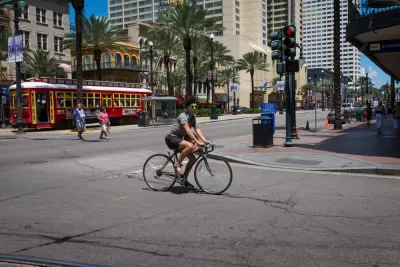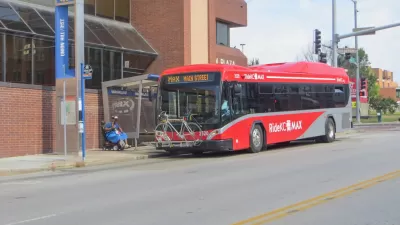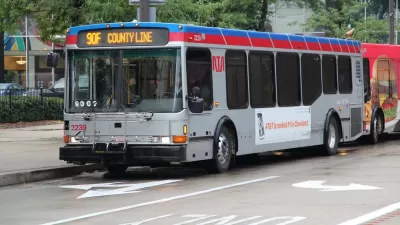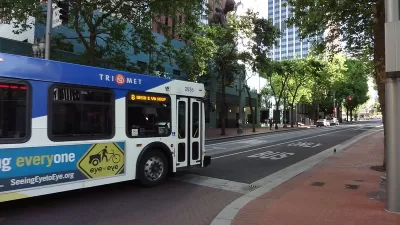A new proposal would improve wait times for area buses and bring more households within walking distance to transit stops.

The board of the Regional Transit Authority (RTA), the agency that operates public transit in New Orleans and surrounding areas, is considering a "significant revamp to the region's public transportation network" to shorten wait times and provide more effective service for commuters. The New Links proposal, writes Jessica Williams for Nola.com, "hopes to strengthen interparish connections" and "get more riders to jobs in the region within 20 minutes."
Developed by the New Orleans Regional Planning Commission, the plan "recommends shifts to more than 40 bus and streetcar routes in the two parishes" to resolve slow arrivals, shorten headways to 15 or 20 minutes, and bring more households within half a mile of a transit stop. It also proposes a new transit hub on the vacant site of the former Lake Forest Plaza shopping mall.
The RTA was created in 1979 "to bridge gaps between Orleans, Jefferson, St. Bernard and St. Tammany parishes," writes Williams, but "parish participation has always been optional, and only Orleans Parish and the city of Kenner signed up."
Funding for the project will be a chief concern, but the agency hopes to raise enough to make a significant impact for residents. "Under an '80% funded' scenario, 36% of residents would see a bus every 20 minutes," a significant improvement over current wait times, which can be 40 minutes or longer.
FULL STORY: How could public transit change in New Orleans? RTA set to consider new plan

Trump Administration Could Effectively End Housing Voucher Program
Federal officials are eyeing major cuts to the Section 8 program that helps millions of low-income households pay rent.

Planetizen Federal Action Tracker
A weekly monitor of how Trump’s orders and actions are impacting planners and planning in America.

Ken Jennings Launches Transit Web Series
The Jeopardy champ wants you to ride public transit.

Washington Legislature Passes Rent Increase Cap
A bill that caps rent increases at 7 percent plus inflation is headed to the governor’s desk.

From Planning to Action: How LA County Is Rethinking Climate Resilience
Chief Sustainability Officer Rita Kampalath outlines the County’s shift from planning to implementation in its climate resilience efforts, emphasizing cross-departmental coordination, updated recovery strategies, and the need for flexible funding.

New Mexico Aging Department Commits to Helping Seniors Age ‘In Place’ and ‘Autonomously’ in New Draft Plan
As New Mexico’s population of seniors continues to grow, the state’s aging department is proposing expanded initiatives to help seniors maintain their autonomy while also supporting family caregivers.
Urban Design for Planners 1: Software Tools
This six-course series explores essential urban design concepts using open source software and equips planners with the tools they need to participate fully in the urban design process.
Planning for Universal Design
Learn the tools for implementing Universal Design in planning regulations.
Heyer Gruel & Associates PA
Ada County Highway District
Institute for Housing and Urban Development Studies (IHS)
City of Grandview
Harvard GSD Executive Education
Toledo-Lucas County Plan Commissions
Salt Lake City
NYU Wagner Graduate School of Public Service





























